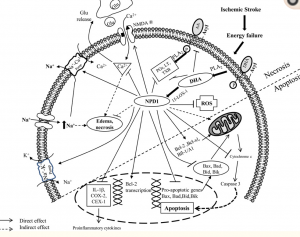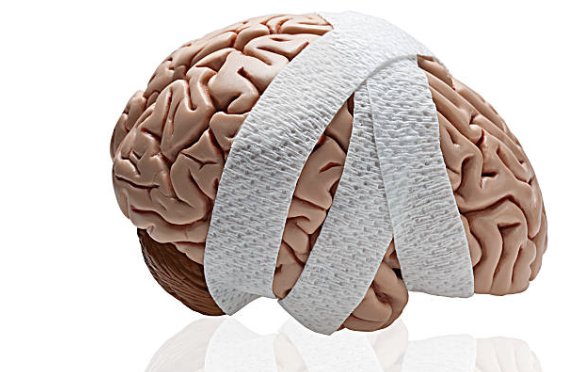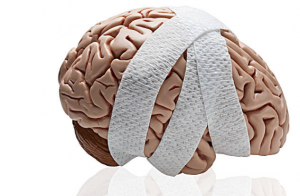What is a concussion?
Concussions are a risk that most contact sports pose to athletes; however, concussions can occur from being in combat and unusual accidents. A concussion can be classified as a traumatic brain injury due to physical impact or force on the skull causing damage to the brain. The total impact/force to the brain can stimulate neuronal dysfunction. Some of the symptoms associated with concussion include: migraines, headaches, impaired cognition, and delayed reaction time.
What happens during a concussion?
The total impact/force to the brain can stimulate neuronal dysfunction. Neuronal dysfunction includes increasing the concentration of sodium and calcium entering the cell, as well as increasing the concentration of potassium exiting the cell causing changes in neuronal signaling cascades and neurotransmission. In essence, the cell cannot maintain a typical state of functioning.
In order to compensate for the ionic imbalance, some additional calcium can be stored in the mitochondria. However, this increases metabolism so much that the production of free-radicals can cause even more damage to the neuron over time. The increased calcium concentration in the neuron can also stimulate neurofilament collapse. Neurofilaments are essential to transmit electrochemical impulses down the axon of a neuron and damage results in the diminished ability to transmit messages. Some examples of this include delayed reaction time and memory impairments, which are essential in sports.
Testing:
Many schools require athletes to conduct an ImPACT test online before sports are played to access normal brain function to create a baseline. Having the baseline is important to determine the extent of the damage, such as decreased visual memory and reaction time after a concussion. The online program can also indicate if someone is trying to hide their symptoms in order to return to sports, being handy for a medical professional to access return protocols. However, even if this tool is used to determine if a concussed athlete is ready to play again is debatable. Some studies demonstrate that BOLD (blood oxygen level dependent) increase after a concussion, improving overall cognition, to skew ImPACT testing results to put an athlete who still needs to rest at risk for a re-injury, resulting in even greater symptoms.
Concussions and sports:
The two sports with the highest practice-related concussion rates are football with 5.0 per 10,000 athletic exposures and cheerleading with 3.6 per 10,000 athletic exposures. Football helmets have gotten significantly better to reduce the amount of impact received by players, meanwhile cheerleading does not provide much in terms of safety equipment to protect the heads of athletes. Approximately 70% of concussions in cheerleading come from stunting, many occur from simple mistakes. Not all sports can completely avoid the risk of concussions, but safety and prevention techniques can always and should be improved.
Treatments for concussions:
Treatments for concussions are typically based on supportive services, such reducing screen time and working with a physical and occupational therapists. New research has indicated that the supplementation of DHA, which is an omega-3 fatty acid, which could decrease the recovery time associated with concussions. DHA has neuroprotective effects to help decrease oxidative stress, decrease inflammation, decrease calcium influx within the cell, and improve the integrity of ion pumps and channels as seen in Figure 1. However, the amount of DHA that needs to be supplemented to people with concussions is debatable, which could be due to prolonged poor nutrition, especially in athletes, or actually needing more DHA in the body after an injury. Therefore, having an adequate amount of DHA mitigate neuronal dysfunction as seen in typical concussions.
Despite so many individuals suffering from concussions every year, treatment options remain limited and very little can be done besides treat the symptoms of concussions.

So, what?
Concussions extend beyond a simple hit to the head. Concussions can decrease cognitive function and reaction time, as well as needing to reduce normal activities (using any screens) and increasing the likelihood of developing neurodegenerative diseases later in life. Concussions can cause major distress in athletes who are students, which can impact their education by not being able to catch up on homework in an online capacity. Currently, treatment options are extremely limited and need more work to get people back to their normal functioning after experiencing a concussion.
Sources:
- https://pubmed.ncbi.nlm.nih.gov/25232881/
- https://neurofilament.osu.edu/research/neurofilaments/
- https://www.upmc.com/services/sports-medicine/services/concussion/baseline-testing
- https://www.brmh.net/services/orthopedics/athletic-training/concussions-and-impact-testing/
- https://publications.aap.org/pediatrics/article/144/5/e20192180/38225/Concussion-Incidence-and-Trends-in-20-High-School?autologincheck=redirected
- https://www.ncbi.nlm.nih.gov/pmc/articles/PMC4201839/
- https://www.xiahepublishing.com/m/ArticleFullText.aspx?
- https://www.chrichmond.org/services/neurosciences/concussion-and-traumatic-brain-injury/concussions-and-technology

